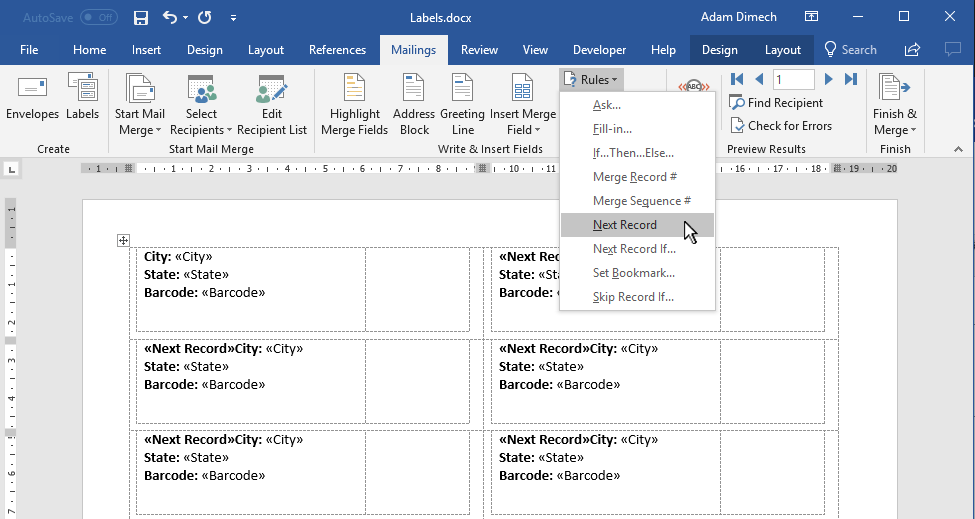

Then, when you switch from one data source to another, Word should remember the correct mappings. You need to check the Remember this matching for this set of data sources on this computer box at the bottom.

#LABEL MAIL MERGE FROM EXCEL TO WORD 2010 FULL#
You can pick these fields from the full Insert Field dialog box by selecting the "Address" option instead of the default "Database" option, and you can remap the fields using the Match fields. This uses a standard set of field names which you "match" (or "map") to the column names in your Excel sheet. Instead of using the column name ("namea") via, you use an Address Field like this This suffers from a limitation which I would normally think of as a showstopper (I'll describe it later), but it works like this: you could use "Address fields" rather than "Database fields". (This isn't documented anywhere I know).ī. Then (using Alt-F9 to look at the field names) you would need the following in your Mail Merge Main Document For example, suppose your workbook contains 2 sheets, Sheet1 and Sheet2, and on Sheet1 column 1 is called namea and on Sheet2 column 1 is called nameb. if every sheet uses the same columns, but with different names, you may be able to use the column number instead of the name. If you are using ADDRESSBLOCK or GREETINGLINE fields, which rely on field mapping, things are even trickier.Ī. What can be used also depends on whether you want to combine all the data from several sheets into a single output, or whether you want separate outputs per sheet. There are other ways, but most involve programming or methods that I would say are not reliable enough for typical scenarios, and the other one will only work in some circumstances. Or accept that you have to copy and modify your Mail Merge Main Document to merge data from each sheet. IMO the way jmac has suggested is probably the simplest and most reliable unless you have access to good coding resources.


 0 kommentar(er)
0 kommentar(er)
